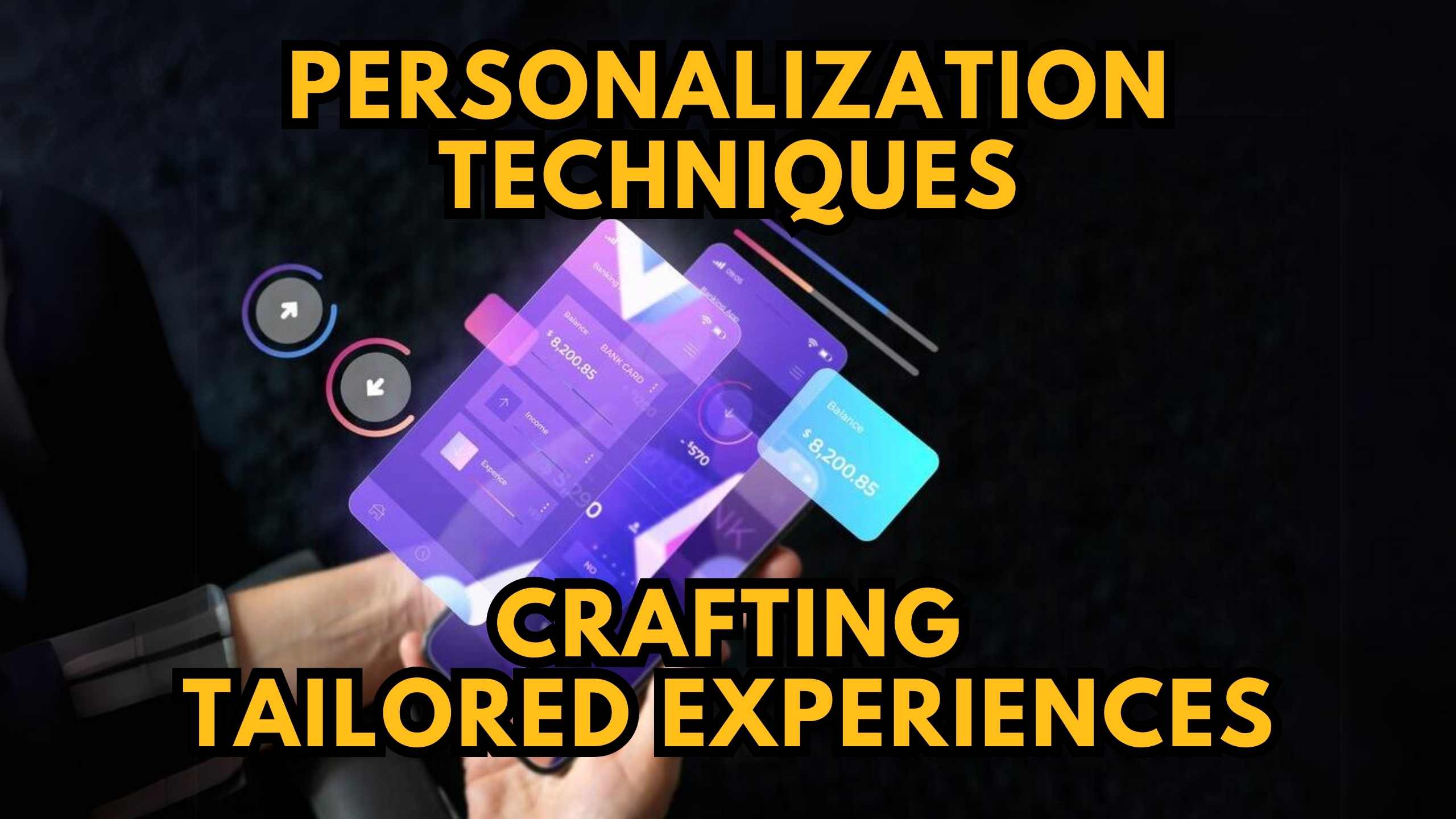Personalization Techniques: Crafting Tailored Experiences


Personalization Techniques: Crafting Tailored Experiences
In the digital era, personalization has become a cornerstone of effective marketing. From tailored content to customized user experiences, businesses leverage personalization techniques to resonate with their audience. This blog will explore various personalization strategies and highlight their significance in creating engaging and individualized interactions.
Understanding Personalization Techniques
1. Dynamic Content Generation for Websites
Implementing dynamic content on your website involves tailoring the displayed information based on user behavior, preferences, or demographics. For instance, if a user frequently explores articles about web design, a dynamically generated homepage might prioritize showcasing content related to this interest, enhancing their overall experience.
Situational Example: Imagine a fashion retailer using dynamic content to highlight winter clothing for visitors from colder regions and summer attire for those in warmer climates, ensuring relevance to their current needs.
2. Email Personalization with Segmentation
Segmenting your email list allows you to send targeted and relevant content to specific groups of subscribers. Consider a scenario where you run an e-commerce platform. By segmenting your subscribers based on their purchase history, you can send personalized product recommendations, increasing the likelihood of conversions and customer satisfaction.
Situational Example: A tech gadget store could send emails featuring the latest smartphone accessories to a segment of customers who recently purchased a new smartphone, providing personalized suggestions.
3. Personalized Product Recommendations
E-commerce giants utilize advanced algorithms to provide users with personalized product recommendations. For example, if a customer frequently purchases fitness equipment, the platform might suggest related items such as workout apparel or nutritional supplements. This not only enhances user experience but also drives cross-selling opportunities.
Situational Example: An online bookstore could recommend books based on a user’s past purchases, offering titles from the same genre or by the same author.
4. AI-Driven Personalization for User Interfaces
Artificial intelligence plays a pivotal role in predicting user preferences and adjusting user interfaces accordingly. In the context of a streaming service, AI algorithms can analyze viewing history and recommend movies or series tailored to individual tastes, ensuring users discover content that aligns with their interests.
Situational Example: A music streaming platform could use AI-driven personalization to create custom playlists based on a user’s favorite genres, artists, and listening habits.
5. Geo-Targeted Personalization for Localized Experiences
Tailoring content based on users’ geographical locations can significantly impact engagement. Imagine you manage a global news platform. Implementing geo-targeted personalization enables you to showcase news relevant to a user’s location, ensuring they receive timely and pertinent information about their local community.
Situational Example: A travel website could use geo-targeting to display special deals and information about local attractions to users based on their current location.
Relevant SaaS Products:
- HubSpot: Elevate your email marketing with HubSpot’s segmentation and automation features. By harnessing the power of HubSpot, you can create targeted email campaigns, implementing personalization techniques to engage your audience effectively.
- Optimizely: Experiment with different variations of your website in real-time using Optimizely. For instance, if you want to test different headlines or images for personalized content, Optimizely empowers you to optimize your website based on user interactions.
- Crazy Egg: Gain insights into user behavior with Crazy Egg’s heatmap analytics. If you’ve implemented personalized interfaces, Crazy Egg helps you visualize how users interact with specific elements, allowing you to refine and enhance the personalized experience.
- Segment: Simplify data collection and utilization with Segment. Segment serves as a central hub, streamlining personalized data integration across channels, whether personalizing content or analyzing user behavior.
Conclusion
Personalization techniques are integral to creating meaningful connections with your audience. By understanding and implementing dynamic content generation, email segmentation, personalized recommendations, AI-driven interfaces, and geo-targeted content, businesses can craft tailored experiences that resonate with users.
Elevate Your Personalization Game with Subscribed.fyi!
Ready to enhance your personalization strategies? Sign up for Subscribed.fyi’s free platform today to unlock exclusive deals on SaaS tools. Discover savings and optimize your personalized approach to captivate your audience effectively.
Relevant Links:











